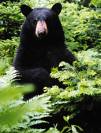Day 14: Freedom Trail, MA
It's Sunday, so let's go to church. The church is Old North Church (the "one if by land, two if by sea" location of Paul Revere's tale), and we are on Boston's famed Freedom Trail.
I love this trip. Start at any place on the trail's map, and walk in any direction. There's tons to see and learn. From the U.S.S. Constitution (oldest commissioned ship in the navy) to the Boston Massacre site, from Paul Revere's house to Granary Burying Ground (final resting place of John Hancock and Samuel Adams), this is a day of discovery and delights for every sense. I won't recount them here. Instead, I will give my impressions of one afternoon.
After visiting Old Ironsides, perhaps my favorite stop on the tour, the family and I walked back to our car through Little Italy (amazing shops with cured meats and cheeses and chiantis and give me one of everything). Once we reached Quincy Market, my wife, mother, and kids went shopping. I went to the Green Dragon where I polished off an ale, sitting in the same place where Paul Revere might have sat. Then I went to the Bell In Hand Tavern, and polished off another ale, in the same place where other revolutionaries must have caroused. I was in good company.
 Afterward, I browsed the outdoor market. Voices of every timbre and accent filled the air, hawking fish of the day, olives from California (I laughed at that one), strawberries, beeswax candles, all sorts of fresh goodies. Very nineteenth century marketplace and very amusing to someone with a belly full of good Boston ale. In a quieter corner I found my own personal El Dorado. An old man was selling fresh clams from an old ice cream pushcart, 50 cents apiece or three for $1.25. I immediately sat at one of the two stools in from of his "establishment," and proceeded to indulge in a dozen huge, fresh, shucked-right-under-my-nose clams. Condiments provided were coarse salt, lemon halves, and Tabasco sauce. I tried all three in all combinations. The old man chatted with me, regaling me with insignificant anecdotes that entertained me immensely. From time to time another tourist, always male, would sit at the other stool for a clam or three, and we would all swap a lie or two. It was great. I paid the man and went on my merry way.
Afterward, I browsed the outdoor market. Voices of every timbre and accent filled the air, hawking fish of the day, olives from California (I laughed at that one), strawberries, beeswax candles, all sorts of fresh goodies. Very nineteenth century marketplace and very amusing to someone with a belly full of good Boston ale. In a quieter corner I found my own personal El Dorado. An old man was selling fresh clams from an old ice cream pushcart, 50 cents apiece or three for $1.25. I immediately sat at one of the two stools in from of his "establishment," and proceeded to indulge in a dozen huge, fresh, shucked-right-under-my-nose clams. Condiments provided were coarse salt, lemon halves, and Tabasco sauce. I tried all three in all combinations. The old man chatted with me, regaling me with insignificant anecdotes that entertained me immensely. From time to time another tourist, always male, would sit at the other stool for a clam or three, and we would all swap a lie or two. It was great. I paid the man and went on my merry way.
I stopped at two more pubs, and visited Ye Olde Clamme Man twice more. Final total: five ales for about $20, thirty-six clams for $15, and one-hundred and four stories for $0. It was one of the most enjoyable few hours I've ever spent alone. Later that evening, I treated my family to lobster 'n stuff at the Union Oyster House, oldest continuously operating restaurant in the country, open since 1826. When we shared our experiences of the day, they were appalled and amazed that I would eat all that and still go out for a seafood dinner. I just burped and smiled.
Go find your own burp and smile somewhere along the Freedom Trail. Just follow the red brick road. For the unbelievable number of historic sites located here, check out this map.
Teasers on this trip: Lexington/Concord, Salem, Plymouth, Walden










































